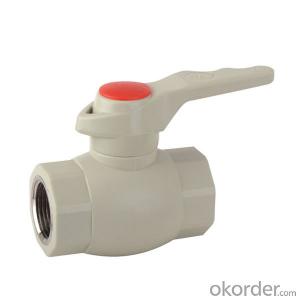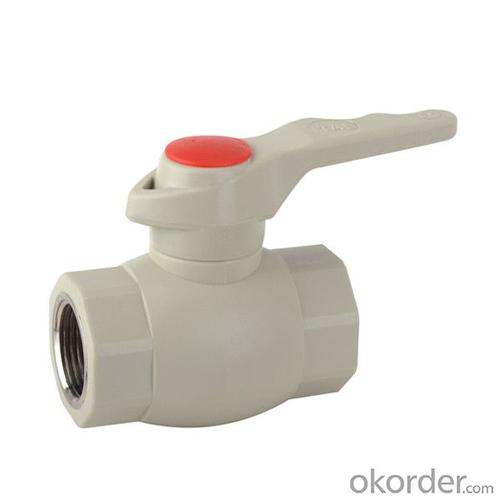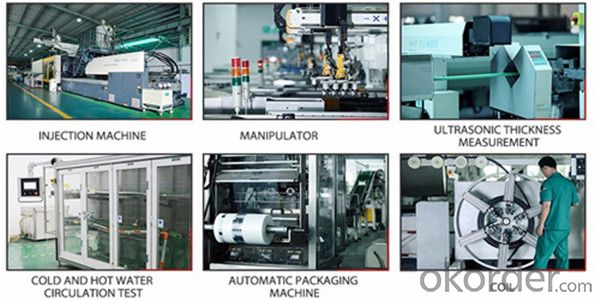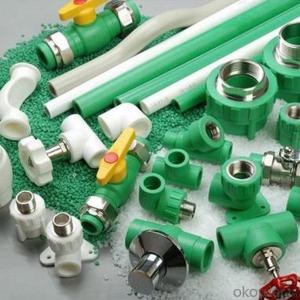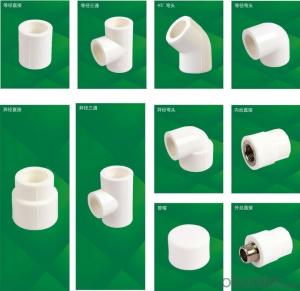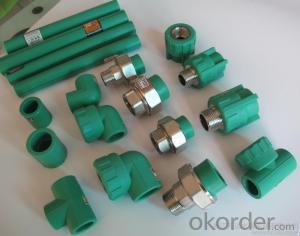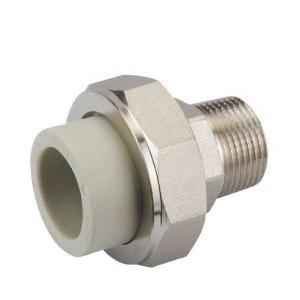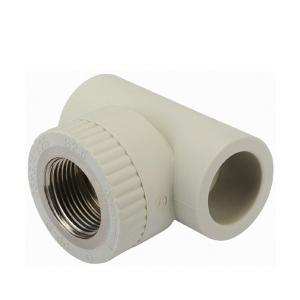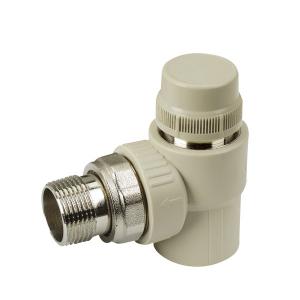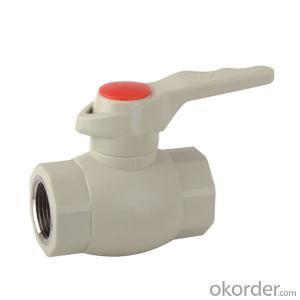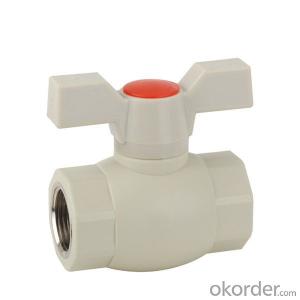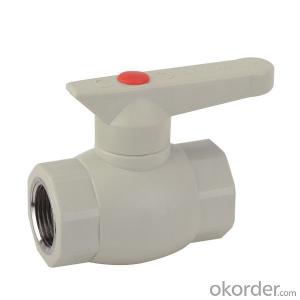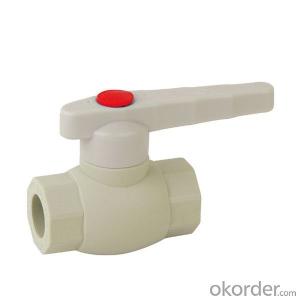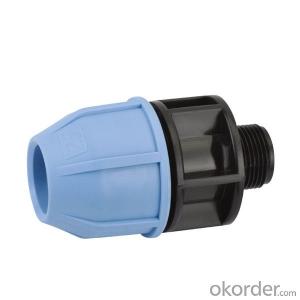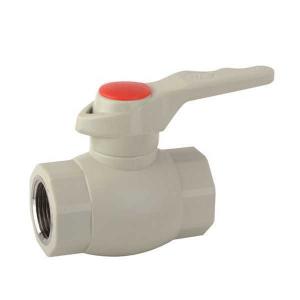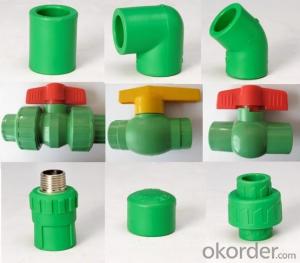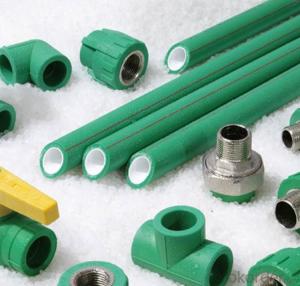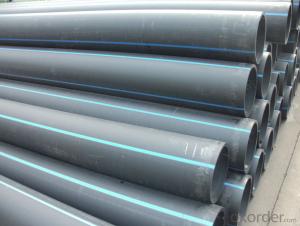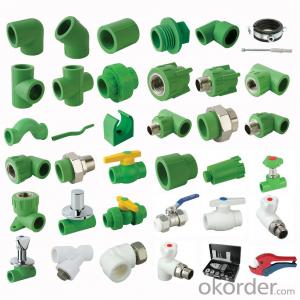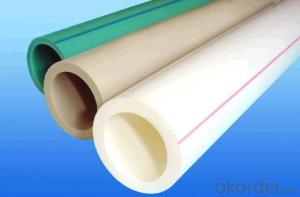Plastic Push Fit Pipe F2 Type PPR Single Female Threaded Ball Valve with Brass Ball
- Loading Port:
- Ningbo
- Payment Terms:
- TT OR LC
- Min Order Qty:
- 1000 pc
- Supply Capability:
- 100000 pc/month
OKorder Service Pledge
OKorder Financial Service
You Might Also Like
Specification
Product Description:
It is used in industrial fields, agriculture and garden irrigation 2. Beauty appearance.3.Thermal insulation and energy saving.4. Easy installation 5.excellent heat resistance and pressure resistance 6. affordable price
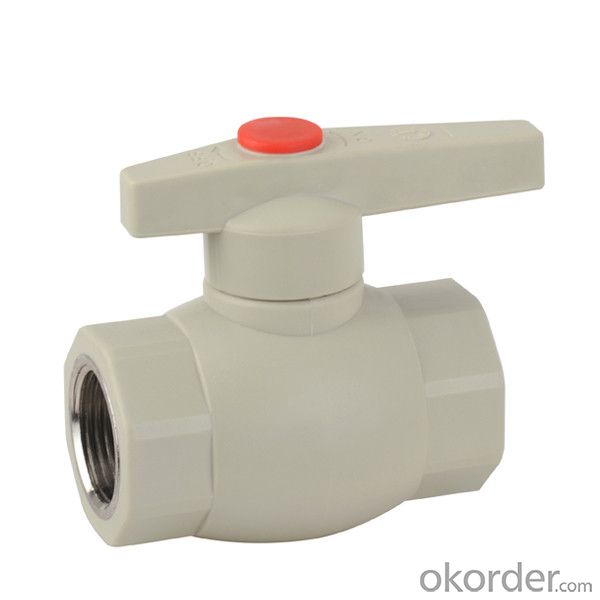
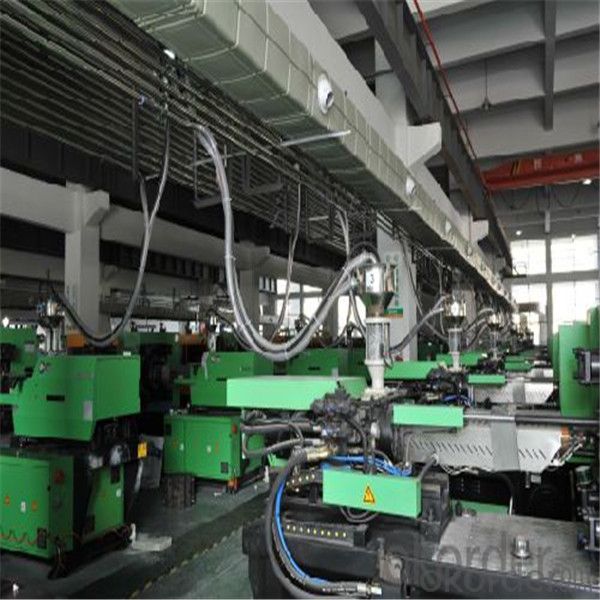
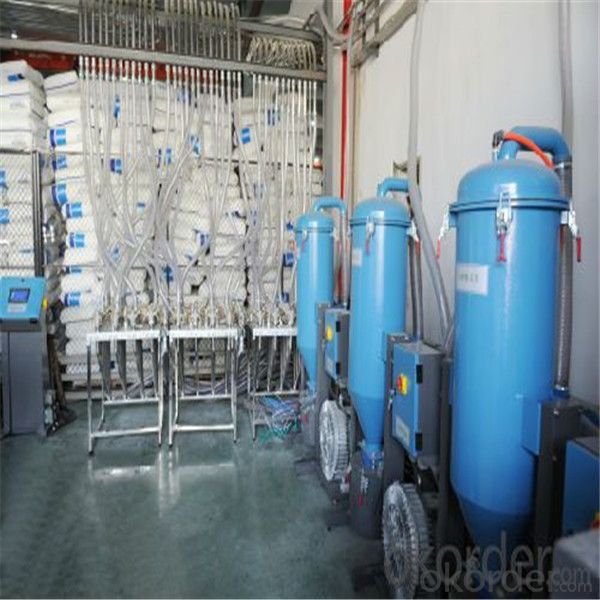

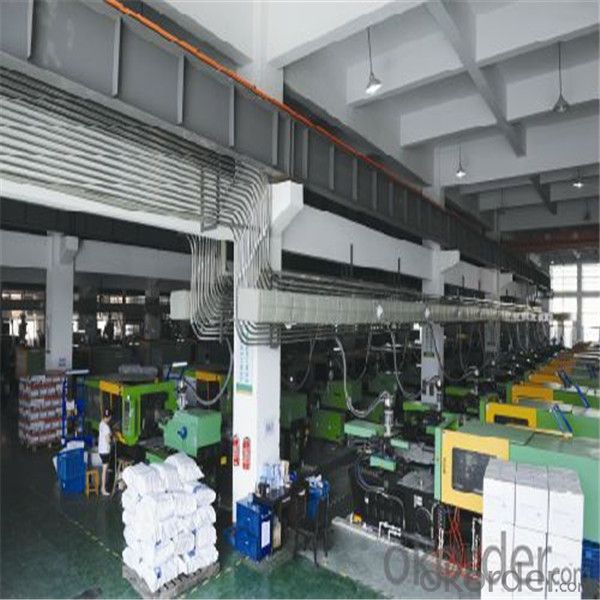
Product Applications:
Distribution for cool and hot water
Duct for drinkable water system
Pipes for kinds of high-temperature and low-temperature heating system
Pipes for heating and coolling settings in solar energy system
Connecting pipe for air conditioners
Product Advantages:
1) Healthy, bacteriological neutral, conforming to drinking water standards
2) Resistant to high temperatures, good impact strength
3) Convenient and reliable installation, low construction expenses
4) Excellent heat-insulation property from minimum thermal conductivity
5) Lightweight, convenient to transport and handle, good for labor-saving.
6) Smooth inner walls reduce pressure loss and increase flow speed
7) Sound insulation (reduced by 40% compared to galvanized steel pipes)
8) Light colors and excellent design ensure suitability for both exposed and hidden installation
9) Recyclable, environment-friendly, accords with GBM standards
Main Product Features:
Large drum hub to maximize cable life
Self-activating automatic brake hold the load securely when crank handle is released
With cable or strap
Safety guard cover available
Top quality with competitive price
Widely used in the double beam bridge crane and gantry crane
Easy to install and high quality
Compact structure and reasonable design
Could be mounted on t he ground or wall!
Double drum!!
FAQ:
Q1:How Can I Get A Sample?
A1:You can get samples by communicate with our export sales.
Q2:How Long Is Delivery?
A2:Delivery time will be30-45days according to order quantity.
Q3:What Is The MOQ?
A3:MOQ depends on different items.
Q4:What Is Our Normal Payments Terms?
A4:Our normal payment terms now is: T/T, L/C or western union,paypal
- Q: Are plastic pipe fittings suitable for hot water applications?
- Yes, plastic pipe fittings are suitable for hot water applications. They are commonly made from materials such as PVC, CPVC, or PEX, which have high temperature resistance and can withstand the heat of hot water systems. Additionally, plastic pipe fittings are lightweight, easy to install, corrosion-resistant, and cost-effective, making them a popular choice for hot water plumbing projects.
- Q: Are plastic pipe fittings suitable for industrial cooling towers?
- Yes, plastic pipe fittings are suitable for industrial cooling towers. Plastic fittings are commonly used in cooling tower systems due to their corrosion resistance, durability, and cost-effectiveness. They can effectively handle the high flow rates and temperature variations often associated with industrial cooling tower applications. Additionally, plastic fittings are lightweight and easy to install, making them a preferred choice for many cooling tower installations.
- Q: PE is the hot melt?
- Is the first set of fused fittings in the pipe, and then use the parameters of welding machine according to the provisions of the (time and voltage) to the electric melting pipe is energized, the outer surface of the inner surface of the pipe and melting electric melting pipe electric heating wire embedded in the insertion end, after cooling pipes and fittings that are fused together. The utility model is characterized in that the connection is convenient and quick, the quality of the joint is good, and the interference of the external factors is small, but the price of the electric melting pipe fittings is several times to several times of the ordinary pipe fittings (the smaller the caliber is, the greater the difference is),
- Q: Do plastic pipe fittings require any special protection against UV exposure?
- Yes, plastic pipe fittings do require special protection against UV exposure. UV rays can cause degradation and weakening of plastic materials over time. To protect against this, it is recommended to use fittings that are made with UV resistant materials or to apply a UV protective coating to the fittings. This will help to extend their lifespan and maintain their structural integrity when exposed to sunlight or other sources of UV radiation.
- Q: Are plastic pipe fittings suitable for laboratory installations?
- Yes, plastic pipe fittings can be suitable for laboratory installations. They are commonly used in laboratories due to their corrosion resistance, chemical compatibility, and ease of installation. However, the suitability of plastic pipe fittings may vary depending on the specific requirements and chemicals involved in the laboratory setup. It is important to consider factors such as pressure ratings, temperature limitations, and the type of chemicals being transported before selecting plastic pipe fittings for laboratory installations.
- Q: Antistatic flame retardant PE plastic pipe installation, what should pay attention to?
- When installing the pipe, the distance between the two socket flexible connections shall be no more than 3 meters. When the length compensation is needed, the pipe can be completely inserted into the socket and then out of the 10mm. Flexible connections between pipes and fittings can absorb thermal expansion of pipes up to 10mm.
- Q: Indoor plastic water supply pipe, 20 of the 20 refers to the inside diameter or outside diameter?
- For the performance indexes of the pipes are quite strict, especially in drinking water, with no need for pipeline without radiation, does not contain harmful substances such as heavy metals, better corrosion resistance, longer service life etc..
- Q: Can plastic pipe fittings be used for industrial waste systems?
- Yes, plastic pipe fittings can be used for industrial waste systems. They are often preferred due to their corrosion resistance, durability, and cost-effectiveness. Additionally, plastic pipe fittings offer flexibility in installation, maintenance, and can handle a wide range of chemicals commonly found in industrial waste systems.
- Q: Are plastic pipe fittings resistant to hydrostatic pressure?
- Yes, plastic pipe fittings are generally resistant to hydrostatic pressure. They are designed to withstand the pressure exerted by liquids or gases flowing through the pipes. However, it is important to use fittings that are specifically designed for the intended pressure and application to ensure their effectiveness and durability.
- Q: What are the common jointing methods for plastic pipe fittings?
- The common jointing methods for plastic pipe fittings include solvent welding, mechanical compression, threaded connections, and push-fit connections.
Send your message to us
Plastic Push Fit Pipe F2 Type PPR Single Female Threaded Ball Valve with Brass Ball
- Loading Port:
- Ningbo
- Payment Terms:
- TT OR LC
- Min Order Qty:
- 1000 pc
- Supply Capability:
- 100000 pc/month
OKorder Service Pledge
OKorder Financial Service
Similar products
Hot products
Hot Searches
Related keywords
